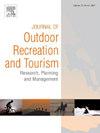基于深度学习的视频分析,用于保护区的访客检测和跟踪
IF 4.4
3区 管理学
Q1 HOSPITALITY, LEISURE, SPORT & TOURISM
Journal of Outdoor Recreation and Tourism-Research Planning and Management
Pub Date : 2025-05-26
DOI:10.1016/j.jort.2025.100890
引用次数: 0
摘要
在保护区(PA)收集游客数据通常是昂贵的,传统的基于相机的方法仍然效率低下,因为图像处理需要大量的人工工作。这项研究开创性地将相机陷阱(CT)与深度学习(DL)模型结合起来,采用基于物体检测的卷积神经网络(CNN),开发了一种针对视频分析而不是静态图像量身定制的离线访客计数算法。通过视频记录人类活动的不同CT模型被部署在西班牙的Sierra de las Nieves和Sierra de Guadarrama国家公园。观众交错的位置和相互遮挡代表了一个典型的视频分析问题。为了解决这一限制,提出的算法部署了多个虚拟计数线,即交叉线和单个访问者的内部标识符。无论视频的长度如何,该算法都能实现准确的跟踪,有效地处理与不同记录持续时间相关的挑战。此外,该算法能够在高质量和中低质量的计算环境中无困难地执行。此外,该研究还包括摄像机位置、视角、天气、一天中的时间、视频分辨率、长度和格式的变化,以评估该算法在现实场景中的鲁棒性。通过该算法实现的CNN模型具有较高的准确率,最佳准确率在98.48% ~ 99.77%之间。此外,无论使用的CNN、帧率和视频集的可变性如何,都能实现高性能。因此,本研究提出了一种监测系统,为PA和其他休闲景观提供一种经济、快速、准确的方法,可靠地跟踪缺乏实时网络覆盖的偏远地区的游客。本文章由计算机程序翻译,如有差异,请以英文原文为准。
Deep learning-based video analysis for visitor detection and tracking in protected areas
Collecting visitor data in protected areas (PA) is often costly, and traditional camera-based methods remain inefficient due to the substantial manual effort required for image processing. This study pioneers integrating camera traps (CT) with Deep Learning (DL) models employing object-detection-based Convolutional Neural Networks (CNN) to develop an offline visitor-counting algorithm tailored for video analysis rather than static images. Different CT models to record human activity through video were deployed in the Spanish National Parks of Sierra de las Nieves and Sierra de Guadarrama. Visitors in staggered positions and obscuring each other represent a typical video analysis issue. To address this limitation, the proposed algorithm deploys multiple virtual counting lines, i.e., crossing lines and internal identifiers for individual visitors. The algorithm achieved accurate tracking regardless of the video's length, effectively handling challenges associated with varying recording durations. Furthermore, the algorithm was able to be executed in a high- and medium-low-quality computing environment with no difficulties. Moreover, the study included variations in camera position, perspective, weather, time of day, video resolution, length, and format, evaluating the algorithm's robustness in real-world scenarios. The CNN models implemented through the algorithm achieved high accuracies, with the best results ranging from 98.48 % to 99.77 %. In addition, high performances were achieved regardless of the CNN employed, the frame rate, and the variability of the video set. Therefore, this study proposes a monitoring system that provides an affordable, fast, and accurate approach for PA and other recreational landscapes, reliably tracking visitors in remote areas lacking real-time network coverage.
求助全文
通过发布文献求助,成功后即可免费获取论文全文。
去求助
来源期刊

Journal of Outdoor Recreation and Tourism-Research Planning and Management
HOSPITALITY, LEISURE, SPORT & TOURISM-
CiteScore
6.70
自引率
5.30%
发文量
84
期刊介绍:
Journal of Outdoor Recreation and Tourism offers a dedicated outlet for research relevant to social sciences and natural resources. The journal publishes peer reviewed original research on all aspects of outdoor recreation planning and management, covering the entire spectrum of settings from wilderness to urban outdoor recreation opportunities. It also focuses on new products and findings in nature based tourism and park management. JORT is an interdisciplinary and transdisciplinary journal, articles may focus on any aspect of theory, method, or concept of outdoor recreation research, planning or management, and interdisciplinary work is especially welcome, and may be of a theoretical and/or a case study nature. Depending on the topic of investigation, articles may be positioned within one academic discipline, or draw from several disciplines in an integrative manner, with overarching relevance to social sciences and natural resources. JORT is international in scope and attracts scholars from all reaches of the world to facilitate the exchange of ideas. As such, the journal enhances understanding of scientific knowledge, empirical results, and practitioners'' needs. Therefore in JORT each article is accompanied by an executive summary, written by the editors or authors, highlighting the planning and management relevant aspects of the article.
 求助内容:
求助内容: 应助结果提醒方式:
应助结果提醒方式:


